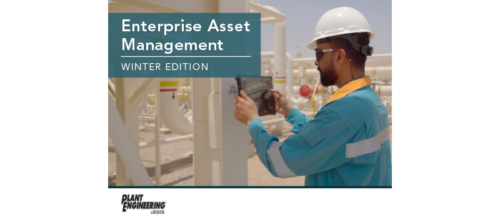Blockchain establishes truth
Why blockchain should be a part of any new well build
With tangible proof of blockchain’s capabilities and benefits, the energy ecosystem is pivoting to swift adoption to maximize opportunities that the innovative technology affords, including reducing costs and increasing visibility into asset life-cycle tracking and real-time project management.
Blockchain’s overall market size will exceed $23.3 billion by 2023 according to Markets and Markets. With considerable cost variability between wells dependent on type, location, conditions, productivity and regulations, blockchain provides a unifying technological backbone that overcomes industry challenges and enables transparency into unambiguous records, a critical step toward a new model of drilling and production.
Life-cycle tracking
Blockchain’s inherent immutable nature enables the establishment of a record of neutral, verifiable truth shared among counterparties and project stakeholders. Blockchain is uniquely suited to track well life cycles with accompanying well integrity files including both plans for the well and the “as built” form.
Daily structured reports — such as the IADC Daily Drilling Report (DDR), operator’s OpenWells or WellView files — are a key record of what happened and when. Electronic drilling recording (EDR) data and surveys that enable the 4D reconstruction of a well’s path is critical data that needs to pass from drilling to production in a consistent, standardized and searchable way. Additionally, the origin of every piece of steel can be traced back to steel mill certifications with the provenance capture capabilities of blockchain technology.
By deploying blockchain as part of well construction and completion processes, errors and data gaps can be caught as they occur. Once a well is in production, data such as wellhead flow meter volumes, flaring temperatures, workovers and additional information provide a complete life cycle picture of a well from design to decommissioning.
The same data stored on the blocks to track the progress of a well — be it a $5 million land well or $85 million offshore well — can also be used to track the performance of service providers and automate contract execution, invoicing and payments. Whether a straight day-rate paid off a drilling report or footage contracts for rental tools, the data necessary for automating contract execution is the same data already being pulled to track the life cycle of the well itself.
Smart contracts enable drilling participants to agree to terms and tolerances up front, then observe operating field data to ensure obligations are met. Once a smart contract is issued, invoicing and payments can be automated. Rendering paper invoices obsolete will streamline transactions and empower parties to prioritize high-quality data to ensure that vendors are paid at speed without dispute and buyers pay only for the services delivered.
Complete transparency
Blockchain’s innate capability to maintain unalterable records that drive visibility into all aspects of well creation and management can be applied to service providers and vendors, in royalty payments scenarios, joint industry billings (JIB) or in due diligence with acquiring/selling assets.
As the oil & gas industry evolves, reducing inefficiencies, streamlining operations and capturing and managing full life cycles of assets will become the new standard. Whether needed for performance measurement, government reporting, packaging and selling of an asset, or just knowing what’s in the hole and what the actual wellpath is, blockchain provides a single source of truth for the entire history from design to plug and abandon. It provides complete transparency into field data on a well asset and that’s why it needs to be part of any new well build.
Original content can be found at Oil and Gas Engineering.
Do you have experience and expertise with the topics mentioned in this content? You should consider contributing to our CFE Media editorial team and getting the recognition you and your company deserve. Click here to start this process.



